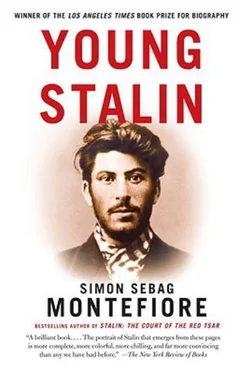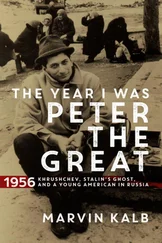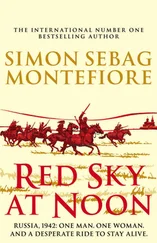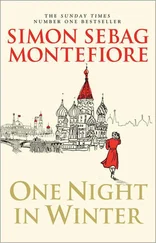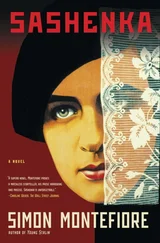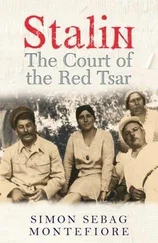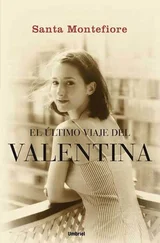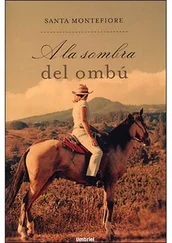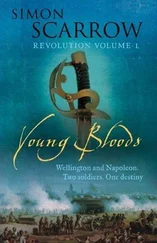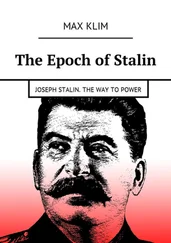Few outside the gang knew of the plan that day for a criminal-terrorist “spectacular,” but Stalin had worked on it for months. One man who did know the broad plan was Vladimir Lenin, the leader of the Bolshevik Party, [1]hiding in a villa in Kuokola, Finland, far to the north. Days earlier, in Berlin, and then in London, Lenin had secretly met with Stalin to order the big heist, even though their Social-Democratic Party had just strictly banned all “expropriations,” the euphemism for bank robberies. But Stalin’s operations, heists and killings, always conducted with meticulous attention to detail and secrecy, had made him the “main financier of the Bolshevik Centre.” {3}
The events that day would make headlines all over the globe, literally shake Tiflis to its foundations, and further shatter the fragmented Social-Democrats into warring factions: that day would both make Stalin’s career and almost ruin it—a watershed in his life.
In Yerevan Square, the twenty brigands who formed the core of Stalin’s gang, known as “the Outfit,” took up positions as their lookouts peered down Golovinsky Prospect, Tiflis’s elegant main street, past the white Italianate splendour of the Viceroy’s Palace. They awaited the clatter of a stagecoach and its squadron of galloping Cossacks. The army captain with the Circassian sabre caracoled on his horse before dismounting to stroll the fashionable boulevard.
Every street corner was guarded by a Cossack or policeman: the authorities were ready. Something had been expected since January. The informers and agents of the Tsar’s secret police, the Okhrana, and his uniformed political police, the Gendarmes, delivered copious reports about the clandestine plots and feuds of the gangs of revolutionaries and criminals. In the misty twilight of this underground, the worlds of bandit and terrorist had merged and it was hard to tell tricks from truth. But there had been “chatter” about a “spectacular”—as today’s intelligence experts would put it—for months.
On that dazzling steamy morning, the Oriental colour of Tiflis (now Tbilisi, the capital of the Republic of Georgia) hardly seemed to belong to the same world as the Tsar’s capital, St. Petersburg, a thousand miles away. The older streets, without running water or electricity, wound up the slopes of Mtatsminda, Holy Mountain, until they were impossibly steep, full of crookedly picturesque houses weighed down with balconies, entwined with old vines. Tiflis was a big village where everyone knew everyone else.
Just behind the military headquarters, on genteel Freilinskaya Street, a stone’s throw from the square, lived Stalin’s wife, a pretty young Georgian dressmaker named Kato Svanidze, and their newborn son, Yakov. Theirs was a true love match: despite his black moods, Stalin was devoted to Kato, who admired and shared his revolutionary fervour. As she sunned herself and the baby on her balcony, her husband was about to give her, and Tiflis itself, an unholy shock.
This intimate city was the capital of the Caucasus, the Tsar’s wild, mountainous viceroyalty between the Black and the Caspian Seas, a turbulent region of fierce and feuding peoples. Golovinsky Prospect seemed Parisian in its elegance. White neo-classical theatres, a Moorish-style opera house, grand hotels and the palaces of Georgian princes and Armenian oil barons lined the street, but, as one passed the military headquarters, Yerevan Square opened up into an Asiatic potpourri.
Exotically dressed hawkers and stalls offered spicy Georgian lobio beans and hot khachapuri cheesecake. Water-carriers, street-traders, pickpockets and porters delivered to or stole from the Armenian and Persian Bazaars, the alleyways of which more resembled a Levantine souk than a European city. Caravans of camels and donkeys, loaded with silks and spices from Persia and Turkestan, fruit and wineskins from the lush Georgian countryside, ambled through the gates of the Caravanserai. Its young waiters and errand boys served its clientele of guests and diners, carrying in the bags, unharnessing the camels—and watching the square. Now we know from the newly opened Georgian archives that Stalin, Fagin-like, used the Caravanserai boys as a prepubescent revolutionary street-intelligence and courier service. Meanwhile in one of the Caravanserai’s cavernous backrooms, the chief gangsters gave their gunmen a pep talk, rehearsing the plan one last time. Stalin himself was there that morning.
The two pretty teenage girls with twirling umbrellas and loaded revolvers, Patsia Goldava and Anneta Sulakvelidze, “brown-haired, svelte, with black eyes that expressed youth,” casually sashayed across the square to stand outside the military headquarters, where they flirted with Russian officers, Gendarmes in smart blue uniforms, and bowlegged Cossacks.
Tiflis was—and still is—a languid town of strollers and boulevardiers who frequently stop to drink wine at the many open-air taverns: if the showy, excitable Georgians resemble any other European people, it is the Italians. Georgians and other Caucasian men, in traditional chokha —their skirted long coats lined down the chest with bullet pouches—swaggered down the streets, singing loudly. Georgian women in black head scarves, and the wives of Russian officers in European fashions, promenaded through the gates of the Pushkin Gardens, buying ices and sherbet along side Persians and Armenians, Chechens, Abkhaz and Mountain Jews, in a fancy-dress jamboree of hats and costumes.
Gangs of street urchins— kintos —furtively scanned the crowds for scams. Teenage trainee priests, in long white surplices, were escorted by their berobed bearded priest-teachers from the pillared white seminary across the street, where Stalin had almost qualified as a priest nine years earlier. This un-Slavic, un-Russian and ferociously Caucasian kaleidoscope of East and West was the world that nurtured Stalin.
Checking the time, the girls Anneta and Patsia parted, taking up new positions on either side of the square. On Palace Street, the dubious clientele of the notorious Tilipuchuri Tavern—princes, pimps, informers and pickpockets—were already drinking Georgian wine and Armenian brandy, not far from the plutocratic grandeur of Prince Sumbatov’s palace.
Just then David Sagirashvili, another revolutionary who knew Stalin and some of the gangsters, visited a friend who owned a shop above the tavern and was invited in by the cheerful brigand at the doorway, Bachua Kupriashvili, who “immediately offered me a chair and a glass of red wine, according to the Georgian custom.” David drank the wine and was about to leave when the gunman suggested “with exquisite politeness” that he stay inside and “sample more snacks and wine.” David realized that “they were letting people into the restaurant but would not let them out . Armed individuals stood at the door.”
Spotting the convoy galloping down the boulevard, Patsia Goldava, the slim brunette on lookout, sped round the corner to the Pushkin Gardens where she waved her newspaper to Stepko Intskirveli, waiting by the gate.
“We’re off!” he muttered.
Stepko nodded at Anneta Sulakvelidze, who was across the street just outside the Tilipuchuri, where she made a sign summoning the others from the bar. The gunmen in the doorway beckoned them. “At a given signal” Sagirashvili saw the brigands in the tavern put down their drinks, cock their pistols and head out, spreading across the square—thin, consumptive young men in wide trousers who had barely eaten for weeks. Some were gangsters, some desperadoes and some, typically for Georgia, were poverty-stricken princes from roofless, wall-less castles in the provinces. If their deeds were criminal, they cared nothing for money: they were devoted to Lenin, the Party and their puppet-master in Tiflis, Stalin.
Читать дальше
